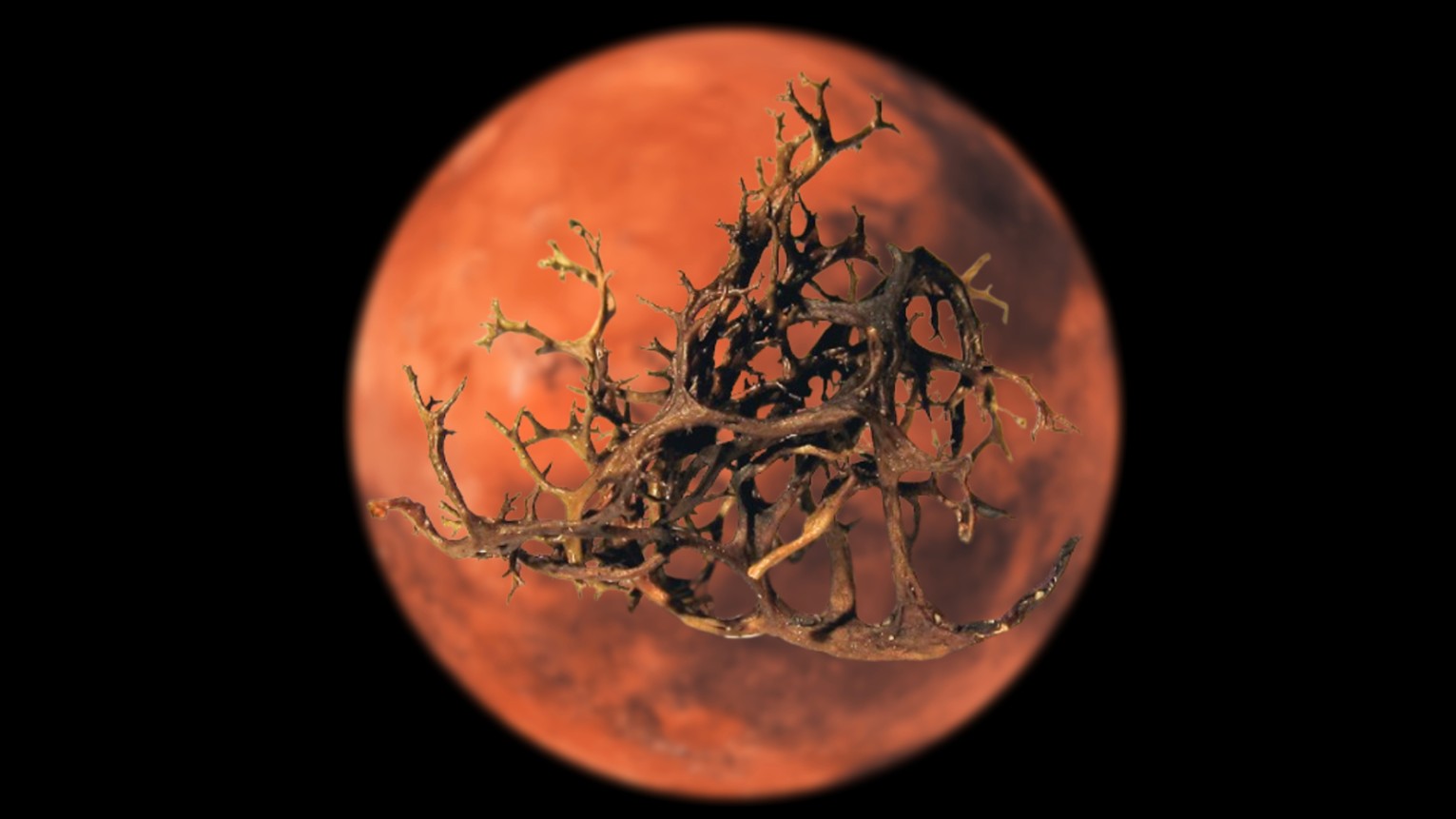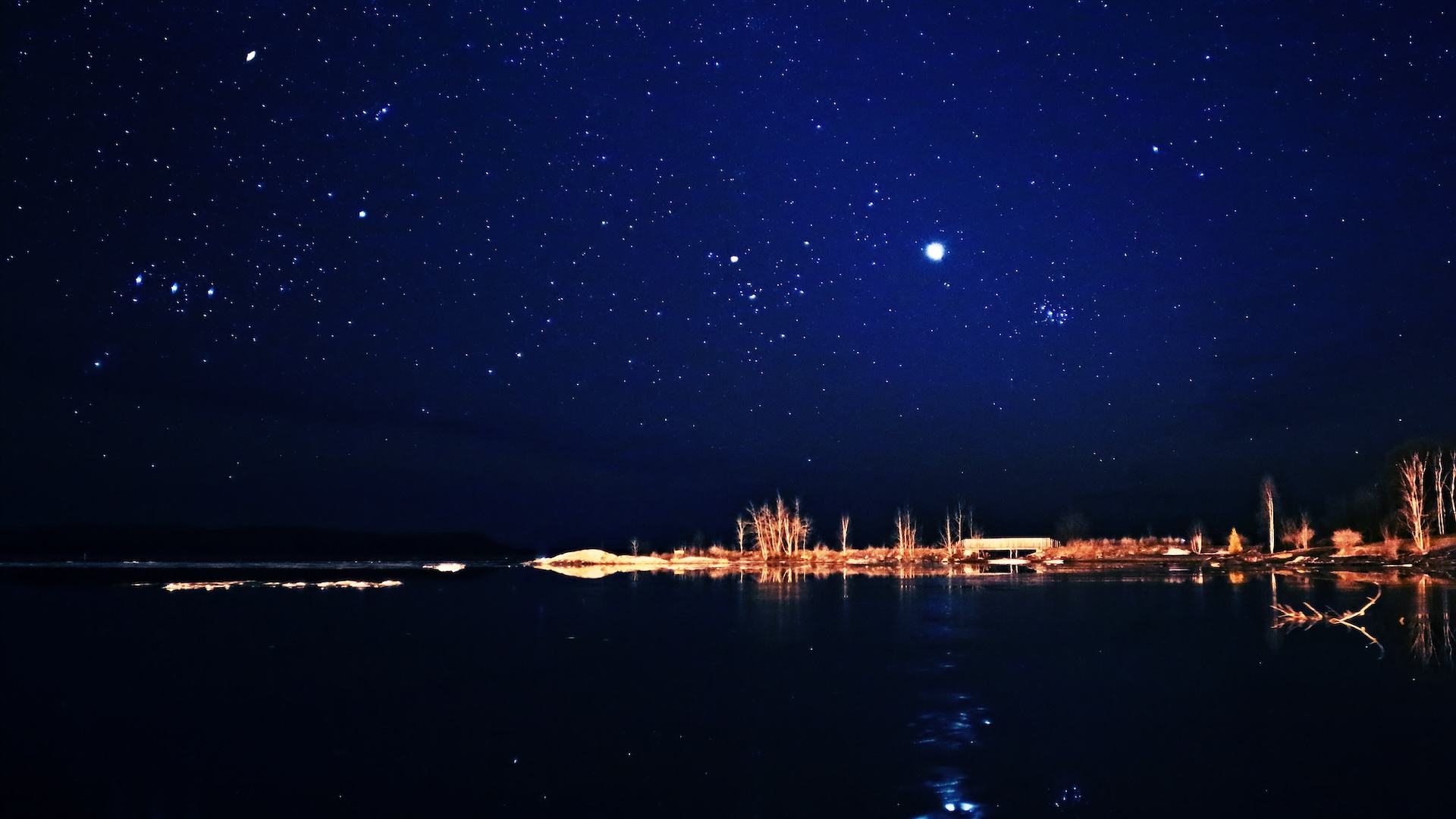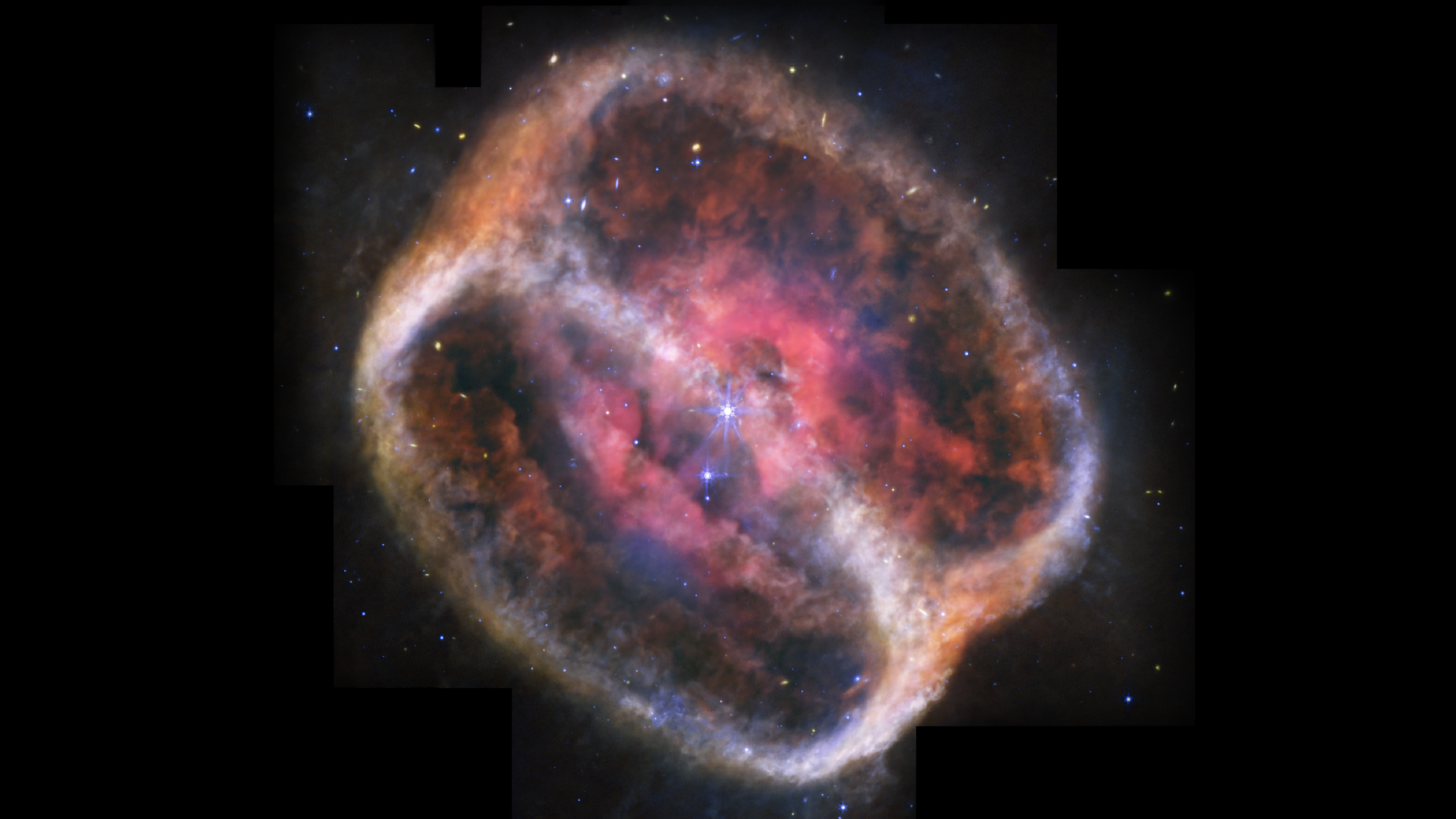Watch eerie 'UFOs' and a solar 'cyclone' take shape in stunning new ESA video of the sun
An eerie new video from ESA's Solar Orbiter shows a towering 'cyclone' of plasma exhibiting behaviors never seen before on our sun.
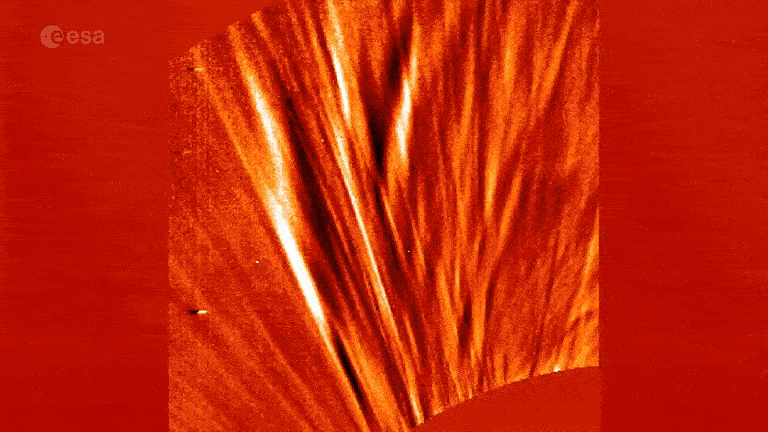
A newly released video has revealed a gigantic plume of solar wind towering above the sun in a never-before-seen, "cyclone-like" configuration that emerged in the wake of a massive solar explosion. The striking timelapse footage also captured strange lines streaking across the fiery scene like pixelated UFOs — but are actually distant stars.
The video, which was released March 26 by the European Space Agency (ESA), is sped-up footage originally taken over an eight-hour period on Oct. 12, 2022, by ESA's Solar Orbiter. The spacecraft captured the scene by blocking out the main disk of the sun, which enabled the probe's camera to focus on the extremely faint light given off by the flow of superfast charged particles, or solar wind, that streams out of our home star nearly constantly.
This is the first time solar wind has been recorded "flying out from the sun in a twisting, whirling motion," ESA representatives wrote in a statement. "The solar wind particles spiral outwards as if caught in a cyclone that extends millions of kilometres from the sun."
The striking video also shows around a dozen perfectly flat, half-dark, half-light lines that creep across the screen like the UFOs and aliens in arcade games such as "Space Invaders."
These features are actually stars that are moving across the background as the orbiter circles the sun, which show up thanks to an editing technique used to make the video, ESA representatives wrote.
Related: 10 supercharged solar storms that blew us away in 2024
Solar ‘pseudostreamer’
In a new study of the video, released March 26 in The Astrophysical Journal, researchers described the giant solar corkscrew as a "large pseudostreamer" that erupted near the sun's north pole in the wake of a solar flare that launched a cloud of plasma, or coronal mass ejection (CME), into space. The pseudostreamer reached up to 1.5 times as long as the sun is wide and lasted for around three hours.
Sign up for the Live Science daily newsletter now
Get the world’s most fascinating discoveries delivered straight to your inbox.
The "helix" structure of the wind jet is likely the result of Alfvénic fluctuations triggered by waves of ions that oscillate in response to magnetic field disturbances that occurred during the flare, the researchers wrote. They noted that the unique shape may also be tied to the streamer's position near one of the sun's polar regions, where magnetic fields are usually much stronger than near the sun's equator.
The sun is currently experiencing the peak in its roughly 11-year cycle of activity, known as solar maximum, which officially began in early 2024. During this phase, powerful solar flares explode more frequently from the sun and solar wind intensifies. However, this video was captured before solar activity started ramping up, which surprised the scientists.
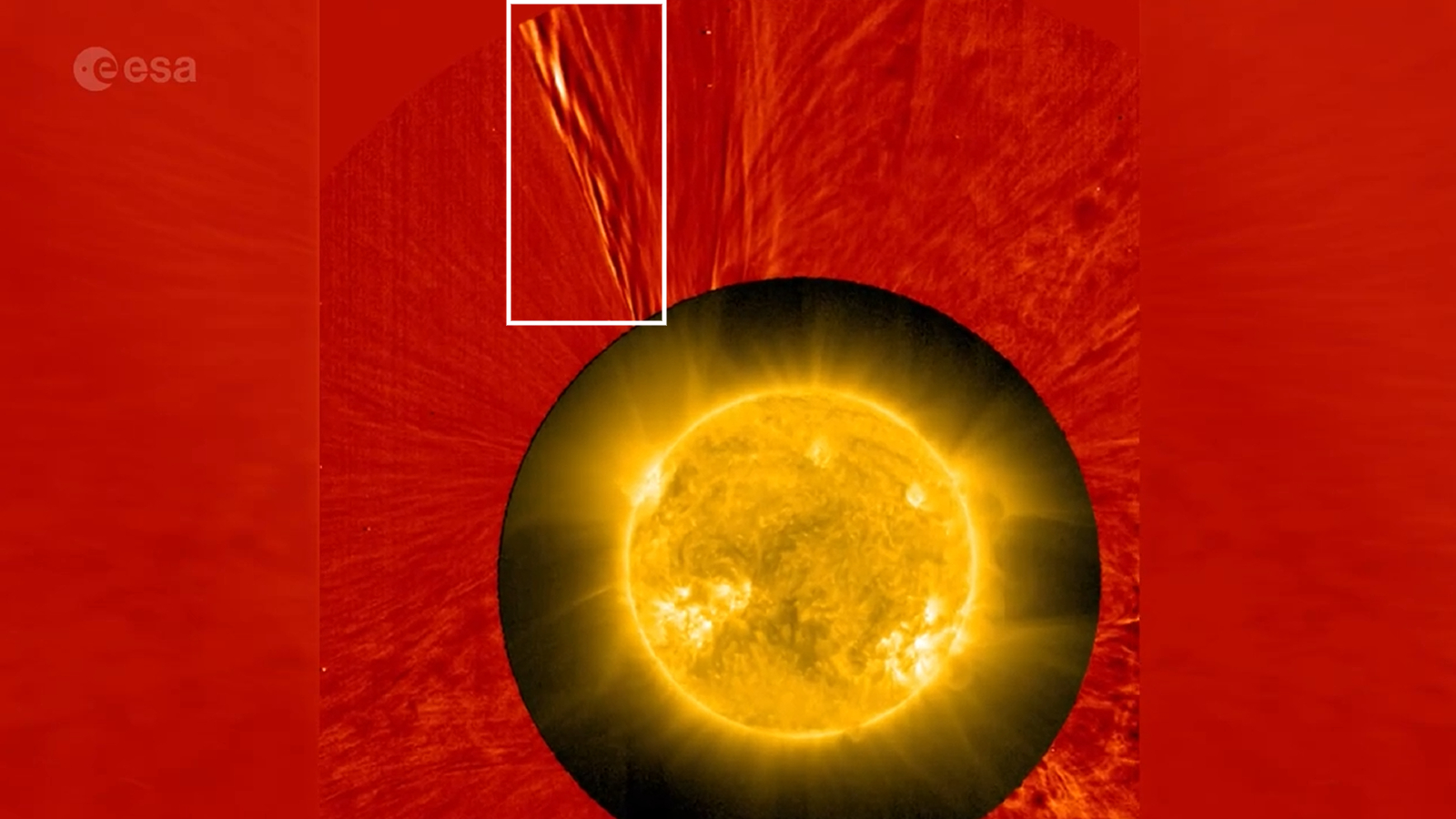
Until recently, the origin and complex behaviors of solar wind have remained largely elusive. But a new generation of spacecraft is helping to unravel these mysteries.
When the video was recorded, ESA's Solar Orbiter was the only probe capable of capturing solar wind in such great detail. However, ESA's Proba-3 mission, which launched in December 2024, is also capable of viewing solar wind thanks to its ability to create artificial solar eclipses in space. NASA's Parker Solar Probe, meanwhile, was launched in 2018 and has helped to capture important solar wind data during its recent super-close flybys of our home star.
Solar wind is expected to become more extreme over the next few years as we enter the solar "battle zone" — a period after solar maximum when magnetic instabilities on the sun cause large coronal holes to open up on the sun's surface and shoot out extreme solar gusts. These solar events will be much like a dark patch that showered Earth with charged particles last week, triggering significant aurora activity.
Sun quiz: How well do you know our home star?

Harry is a U.K.-based senior staff writer at Live Science. He studied marine biology at the University of Exeter before training to become a journalist. He covers a wide range of topics including space exploration, planetary science, space weather, climate change, animal behavior and paleontology. His recent work on the solar maximum won "best space submission" at the 2024 Aerospace Media Awards and was shortlisted in the "top scoop" category at the NCTJ Awards for Excellence in 2023. He also writes Live Science's weekly Earth from space series.
You must confirm your public display name before commenting
Please logout and then login again, you will then be prompted to enter your display name.







